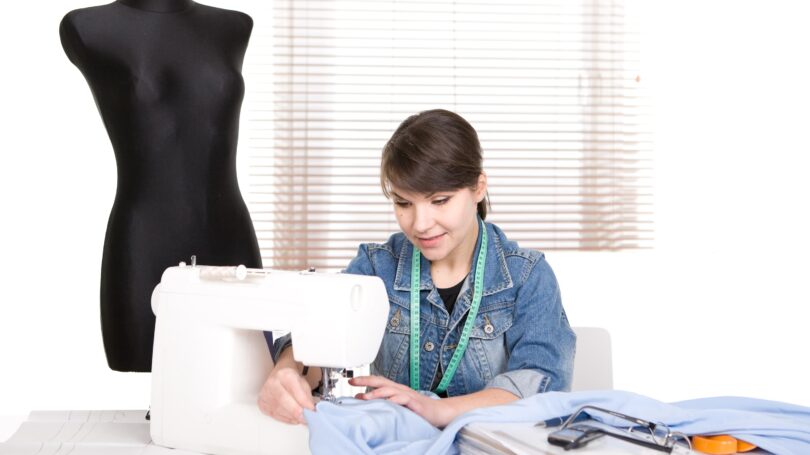Have you ever had an item sitting in your home that’s just too good to discard, but you know you’ll never use it again? You can turn an old possession into something new by bartering.
Bartering is the process of obtaining goods or services by direct exchange without the use of currency. In times of economic instability or currency devaluation, it can be a great way to ensure the flow of necessary items and services into your household without using precious funds. Historically, face-to-face exchanges between familiar parties were most common, but the Internet has opened up a new medium for bartering opportunities for both person-to-person exchanges and third-party facilitated transactions.
Why Would You Want to Barter?
There are many reasons to participate in a barter. Due to the recent recession, many people have found themselves unemployed or with a limited cash flow, and bartering is a great way to attain products and services when times are tough.
You can use bartering to cut costs with your small business or to reduce personal expenses. For example, a handyman can trade services with a hairstylist. Each person is still getting paid for their work, in a sense, and it can lead to referrals to cash-carrying customers without costing a penny. However, the essence of bartering is simply to trade something you have for something you want or need – and you can do this whether you are struggling financially or have a steady income.
What Can Be Bartered?
Any good or service that is desired by another person can be bartered. From housecleaning and haircuts, to recliners and digital music players, bartering is limited only by your imagination.
In 2010, 17-year-old Steven Ortiz made national headlines by bartering a cell phone to start a series of trades that ultimately put him in the driver’s seat of a Porsche. Even healthcare isn’t out of reach: In 2011, Matthew Wagner of Connecticut was able to exchange his photography services for Lasik eye surgery through a barter exchange.
Here are some of the most popular items that can be bartered:
Personal Care Services
A quick perusal of Craigslist will offer haircuts, massages, tattoos, and a variety of personal care services for trade. Utilizing Craigslist can lead to regular trade arrangements and help build bartering relationships and skills, which can lead to future cash sales.
Technology
Technology lends itself to bartering, as even “old” technology is still highly usable and desirable for many people. Therefore, when a technology enthusiast decides to update his or her electronic product, the old version will be valuable to someone else in a trade.
For instance, each time Apple releases a new version of the iPhone, the second-hand market for older versions of the iPhone enjoys a flurry of activity. However, you do have to be as careful with the barter of used goods as you would be with the purchase of used goods. Be sure everything is in working order and shows no signs of significant damage.
Clothing
You may find it beneficial to coordinate a clothing exchange. Arrange with several people to each clean out your respective closets, and bring a minimum or preset amount of clothing to a “swap day,” wherein everyone sets out their clothing on a table and chooses from what’s available.
It’s best to create a random system so you don’t have a free-for-all. For instance, everyone picks a number out of a hat, and that determines the order in which they get to select an item. Set the rules for the swap in advance, and donate old clothing to charity.
Toys
Due to your children’s age or their waning interest, some toys may no longer be a hit. Create a toy exchange with other parents in your neighborhood so you can keep “new” toys coming to your children without incurring additional cost or adding to the landfill.
Gifts & Crafts
Especially prior to the Christmas holiday season, a gift and craft exchange can take the pinch out of your budget. Contact people within your network and arrange a day where people exchange homemade holiday decorations. You may not find everything you’re looking for, but you will likely find at least a few stocking stuffers – and the perfect price.

Bartering Methods
1. Face-to-Face
Occasionally, you may find bartering opportunities arise while you’re with a group of friends or acquaintances. For example, a family friend has a large property with chickens and an abundance of eggs. When I’m baking bread for my family, I always bake an extra loaf and trade it for any of their surplus.
Bartering with friends will often start informally. In our case, our friend was lamenting the possibility of the extra eggs spoiling, while at the same time relaying how much she loved my fresh-baked bread. My suggestion to trade eggs for bread was met with an enthusiastic response, and now we trade regularly.
You can even set up a barter group that allows multiple people to trade their wares and services. This is particularly handy during Christmas time and any other gift-giving season.
2. Online via the Internet
Sometimes you may have something to trade, but no one to trade with. However, the Internet has facilitated a unique system of bartering with strangers. There is no need for introductions through friends, as in most cases you can place a personalized ad describing what you have to offer, and what you seek in exchange.
However, it is important to always exercise caution when utilizing the Internet for bartering purposes. Not every bartering or swapping website, nor every person using these sites, are reputable or open to noncommercial traders.
Craigslist
Craigslist is well-known as a place to find a job, sell old stuff, or purchase furniture and other used goods, but it also has a section dedicated to barter options. To utilize this feature, you simply go through the same process you would to post any other job or item for sale, and it’s completely free.
While it may be free, there is no one monitoring the barter ads, so you must be aware of potential Craigslist scams, and realize that you are always at risk when it comes to meetups and exchanges. For example, about a year ago, I arranged to trade massage gift certificates for housecleaning. Since the individual was coming to my home, I was more nervous than usual. However, she offered good previous references, and we arranged for a time to meet when my husband would be home, in case an odd, unexpected, or even dangerous situation arose.
You should always attempt to have an initial meeting in a public place, such as a local coffee shop. It’s also helpful to have someone with you. Just make sure you let the other person know someone will be accompanying you for their peace of mind and caution.
U-Exchange.com
U-Exchange is a bartering website that allows people to find trade-able goods and services in a specific geographical area. Search your country, narrow it to your state, and start browsing away. The site requires a membership to post and begin exchanging, but it is a free service that is supplemented by banner advertisements.
Just like Craigslist, U-Exchange is a general posting site, and you assume all risk and responsibility for contacts and exchanges you make. When you see a trade that you are interested in making, click on the member’s name. You will be provided with their contact information, and from there it proceeds much as a face-to-face exchange.
A quick glance in the Oregon region includes someone looking for vacation lodging, someone trading a classic car for a four-wheel-drive SUV, and people trading body piercing, mechanic services, landscaping, and more.
3. Time Banks
What happens if person A wants a massage and can trade haircuts, person B wants a haircut and can trade landscaping services, person C wants lawn care and can trade auto detailing, and so on? How can all of these people’s wishes be met?
A barter exchange, or “time bank,” allows you to “bank” what you’ve earned from services you’ve provided and use those “funds” once you find the service you’re looking for. In this case, the currency is time, so if you spend an hour performing a service that earns you a “time dollar,” that can be redeemed for any service requiring a “time dollar.”
For instance, person A could give person B a haircut, and use the time dollar to trade for the auto detailing from person C. Though you run the risk of never finding something you want, the chances of that are quite low.
To try a time bank, search online for one in your local area using TimeBanks.org. How time banks are managed varies according to the region, so it is important (and often mandatory) to attend an initial meeting that explains the general rules of your local chapter. Once you do this, you’re ready to start trading away. Your services and contacts are identified through the local time bank website.
A time bank may require a membership fee, although it may be just a few “time dollars” a quarter. However, you gain the benefits of trading within a local organization that can allow you to verify the services of participants.

Cautions of Bartering
There are reasons bartering is not the dominant system anymore, as it does have numerous disadvantages:
Availability
Simply put, the bartering market is not nearly as liquid as other markets. You may find yourself with something to trade, but no one to trade with. Unless you’re using a barter exchange service like a time bank that allows you to bank your investment, you may have to wait a long time to make your trade.
Unequal Bartering
Inevitably some people may feel like they were taken advantage of. One way to diminish inequities is to engage in dollar-for-dollar trades. For example, if you would like to trade your housecleaning service for someone’s couch, try to break down the goods and services to the dollar amount. If the two of you decide that the value of the couch is worth $200, why don’t you supply a gift certificate for $200 worth of housecleaning services? It’s a wise course and ensures all parties know what they are getting and what they are offering.
However, this isn’t always possible. For instance, you may have a $150 digital music player and want a small refrigerator worth $100. In this case, if both parties are certain of what they want and understand the difference in value, there should be no barterer’s remorse. Alternatively, you can ask for the mini-fridge plus $50 to make the trade – the worst anyone can say is “no.”
Taxes
When exchanging services, it’s important to remember that bartering is considered income. While you may be able to write off expenses you incur during the barter, you must claim the fair market value of the services you provided as income. For example, if you charge $60 an hour as a massage therapist, and you trade a one-hour massage for housecleaning services, you may have to claim the equivalent income. When you trade assets, you may even be responsible for tracking capital gains or losses. If you have any doubts or questions, consult the IRS website.
Bartering Rules
There are a number of rules for bartering to follow for reasons of both safety and courtesy:
- Remember, Safety First. Don’t be afraid to ask someone to come with you to an exchange, and meet in a public place if possible.
- Always Be Inquisitive. I would never have known how wonderful farm-fresh eggs taste if I hadn’t asked for a trade. The worst thing anyone can ever say is “no.”
- Consider All the Goods and Services at Your Disposal. I’ve seen many cases where people posted what they wanted, followed by a large list of different items or skills they were willing to exchange. If you go in thinking of only one thing you are willing to trade, you may miss a great opportunity.
- Be Skeptical When Necessary. People may offer professional services – even legal or medical – that do not seem legit. If you wouldn’t pay that particular person for their services, don’t barter with them either.
- Don’t Barter Something You Don’t Want to Give. If your friend is trying to get you to trade Grandma’s hand-crocheted baby blanket, you can simply walk away. You should never trade something you’ll later regret.
- Don’t Barter for Something You Don’t Want. Unless you’re trying to salvage the pride of a friend who won’t take charity, there is no reason to accept goods or services that are unnecessary or unwanted.
- Test Items to Be Sure They Work. But remember, there are no guarantees. An item that powers up may still have a dying battery.
- Don’t Blame the Other Party for a Bad Trade. You can always decline a trade, so that responsibility is yours. You may not have made the best decision, but the same thing happens when making a retail purchase.

How to Begin the Bartering Process
Bartering is easy. Just follow several simple steps, and you can turn your trash into treasure:
- Decide what you need.
- Identify a suitable trading partner or network.
- Make contact with a person to begin your trade. Be very clear and detailed regarding what you have and what you are looking for in return. For example, “I would like to trade a one hour massage for one hour of housekeeping on a weekly basis. My preferred time-frame is Friday afternoons or Saturday mornings.”
- Negotiate the details of the trade, including location, what you’re trading, and even where you’ll meet, being certain that both parties are happy with the result.
- Execute the trade and start searching for your next great exchange.
Final Word
While there are most certainly safety considerations – and in some cases, a time commitment – bartering can be quite rewarding. You may not have a surplus of spendable money, but you do have talents, skills, and miscellaneous goods that are just as good as cash. With a little thought, and willingness to make the effort, you can use bartering to obtain the goods and services you want without impeding your cash flow.
Have you had any success bartering? What tips or suggestions do you have to barter successfully?
